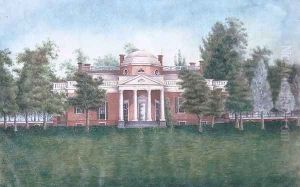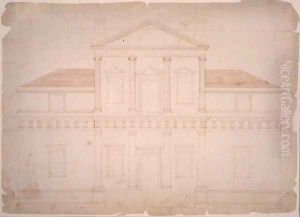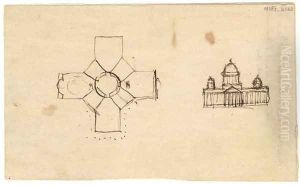Thomas Jefferson Paintings
Thomas Jefferson, though primarily known as a statesman and one of the Founding Fathers of the United States, was also a man of the Enlightenment with a wide array of intellectual interests, including art and architecture, among others. Born on April 13, 1743, at the Jefferson family estate in Shadwell, Virginia, he was the third of ten children. Jefferson's contributions to the arts are most notably reflected in his passion for architecture, which was informed by his admiration for classical architectural principles and the works of Palladio.
Educated at the College of William & Mary, Jefferson went on to study law but maintained a strong affinity for classical languages and philosophy. He was an avid reader and cultivated an extensive library. His interests spanned various disciplines, including science, religion, and education, which all influenced his approach to art and architecture.
Jefferson's architectural legacy is most famously encapsulated in his design of his home, Monticello, in Charlottesville, Virginia, and the campus of the University of Virginia. Monticello is emblematic of Jefferson's architectural philosophy, incorporating neoclassical design elements and innovations that reflected his ingenuity and understanding of functionality. As the founder of the University of Virginia, Jefferson designed the original buildings and layout of the campus, aiming to create an environment conducive to learning and exploration.
In addition to his architectural pursuits, Jefferson was a proponent of landscape gardening and took an active role in the design and cultivation of the grounds of Monticello. His interest in botany and agriculture was also evident in his meticulous planning of the gardens and farms on his estate.
Apart from his personal endeavors in the arts, Jefferson's influence is also seen in his advocacy for the establishment of a national culture that would reflect the democratic ideals of the young United States. He was a supporter of the fine arts and believed in the educational value of art and architecture for the republic.
Jefferson's death on July 4, 1826, coincided with the 50th anniversary of the Declaration of Independence, a document he authored and which stands as a testament to his enduring legacy. While not an artist in the traditional sense, Jefferson's artistic vision and his contributions to American architecture have left an indelible mark on the nation's cultural heritage.


